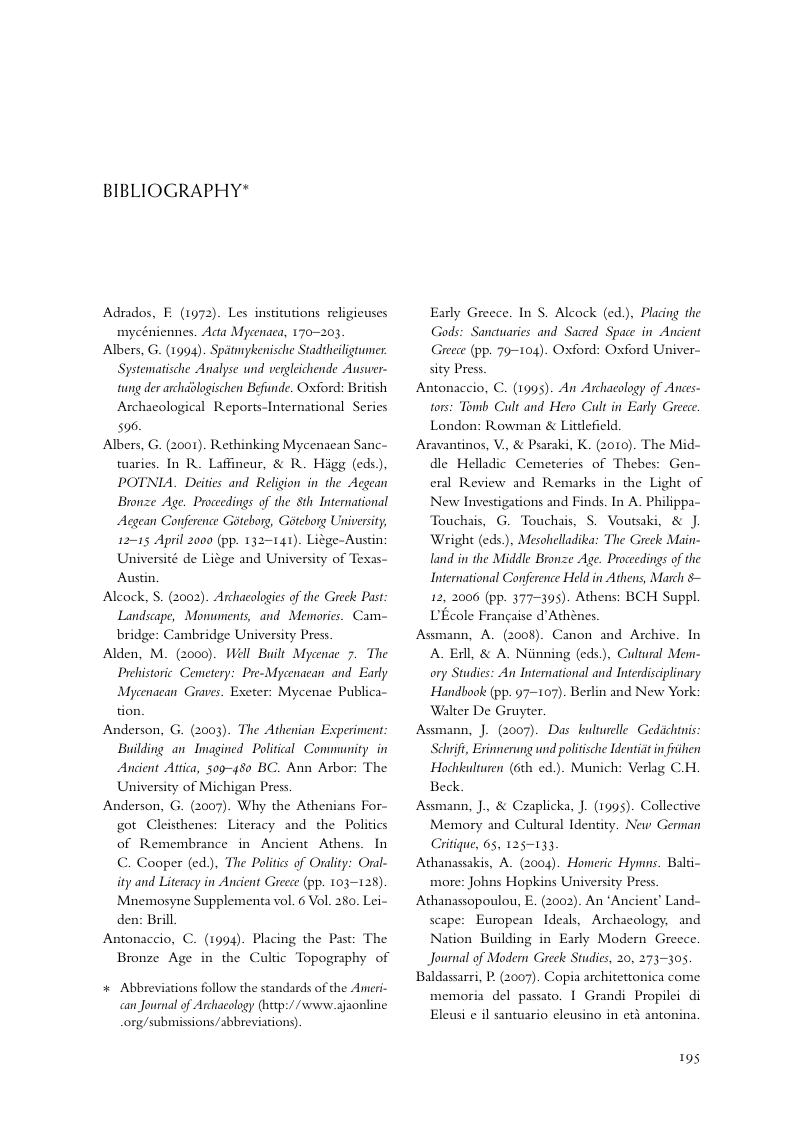Book contents
- Bronze Age Eleusis and the Origins of the Eleusinian Mysteries
- Bronze Age Eleusis and the Origins of the Eleusinian Mysteries
- Copyright page
- Dedication
- Dedication
- Contents
- Figures
- Preface
- Glossary
- Introduction
- Part I Myth and Cult
- Part II The Site and Its Exploration
- Part III The Archaeology and Monuments of Eleusis
- Part IV The Origins and Early Development of the Eleusinian Mysteries
- Chronological Table*
- Notes
- Bibliography*
- Book part
- Index
- References
Bibliography*
Published online by Cambridge University Press: 05 July 2015
- Bronze Age Eleusis and the Origins of the Eleusinian Mysteries
- Bronze Age Eleusis and the Origins of the Eleusinian Mysteries
- Copyright page
- Dedication
- Dedication
- Contents
- Figures
- Preface
- Glossary
- Introduction
- Part I Myth and Cult
- Part II The Site and Its Exploration
- Part III The Archaeology and Monuments of Eleusis
- Part IV The Origins and Early Development of the Eleusinian Mysteries
- Chronological Table*
- Notes
- Bibliography*
- Book part
- Index
- References
Summary

- Type
- Chapter
- Information
- Bronze Age Eleusis and the Origins of the Eleusinian Mysteries , pp. 195 - 220Publisher: Cambridge University PressPrint publication year: 2015



